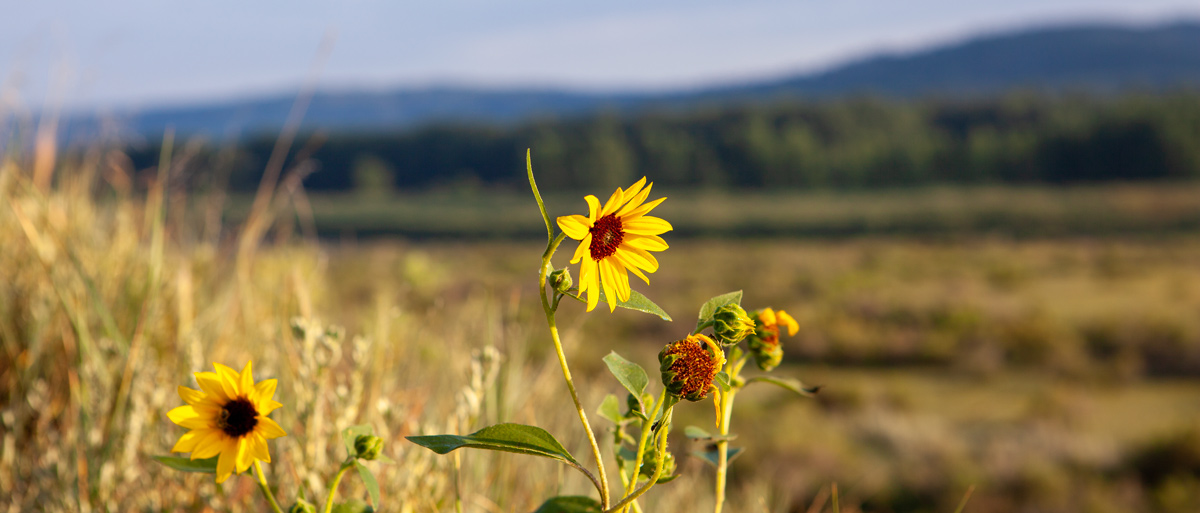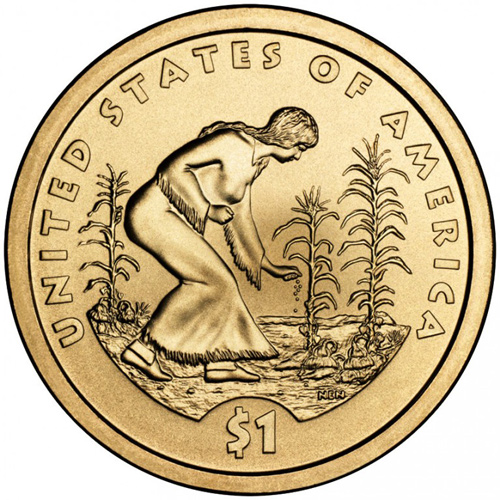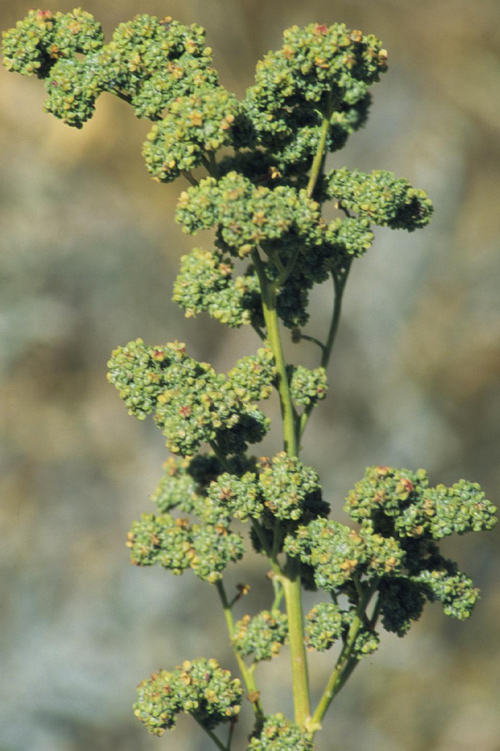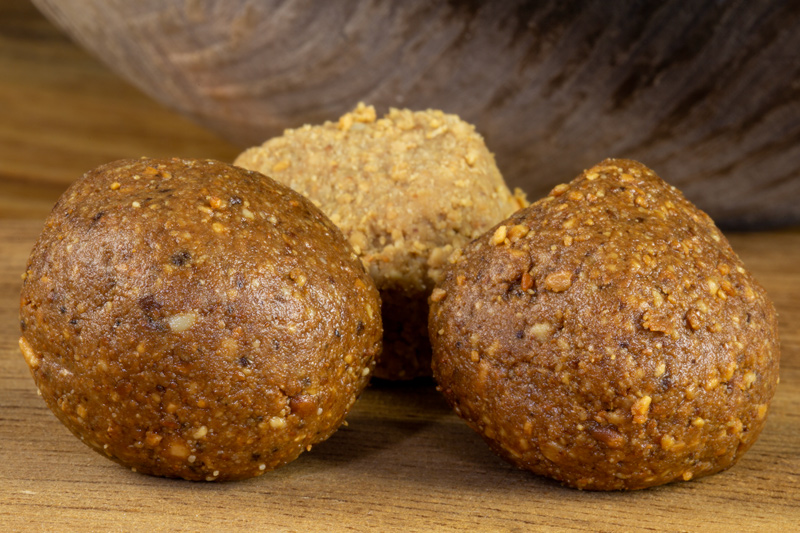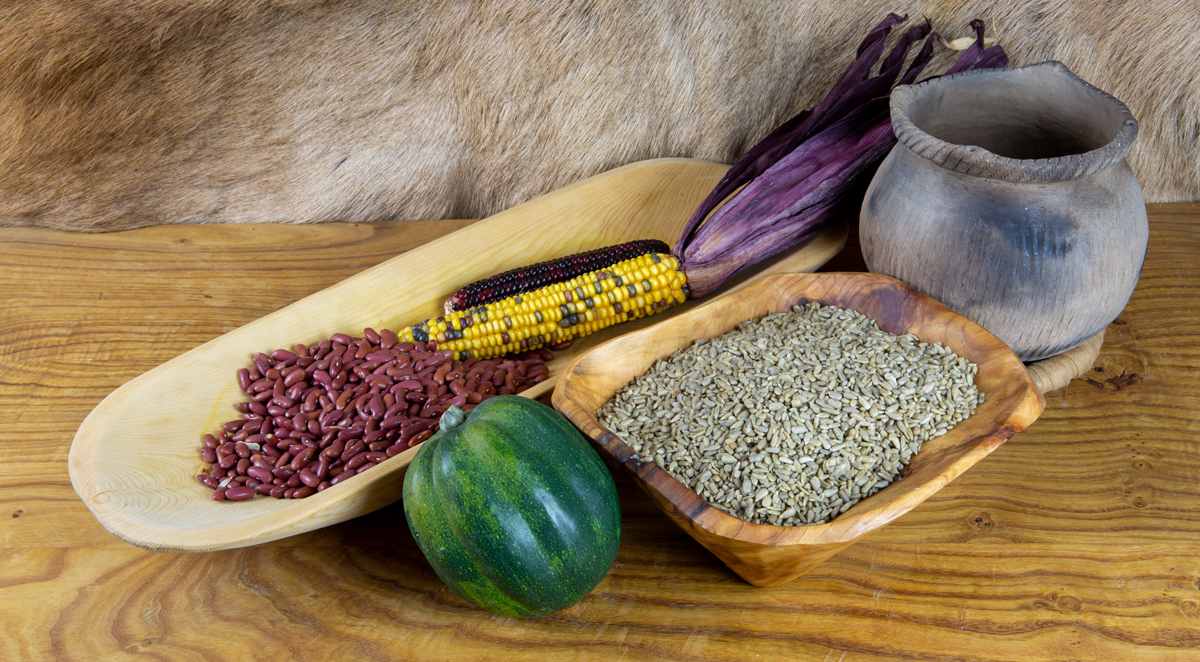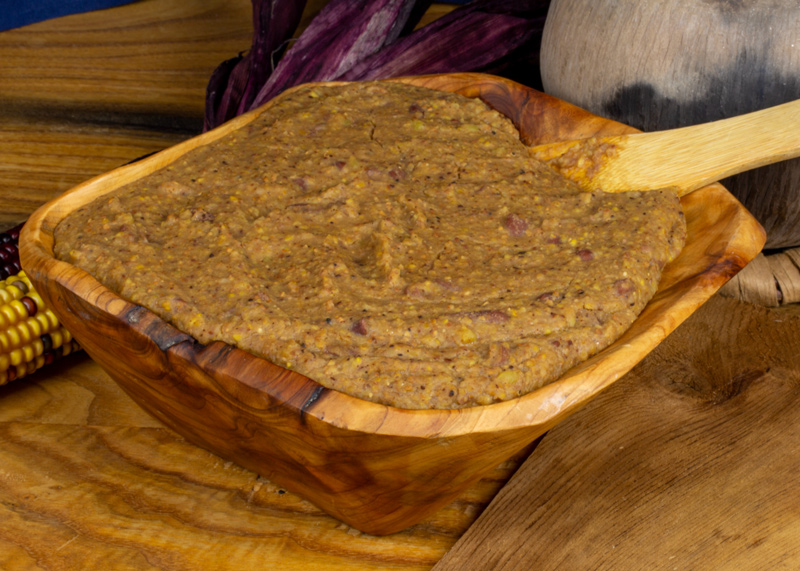Common Sunflower
Helianthus annuus, L.
Taken 25 July at Kipp Recreation Area, Montana. © 2013 by Kristopher K. Townsend. Permission to use granted under the Creative Commons Attribution-Share Alike 4.0 International license.
First Encounters
The common sunflower, Helianthus annuus, first cultivated in the Americas, grew wild in drainages and below dry hills in the prairies north of the Platte River. Sgt. John Ordway mentioned bushwhacking through “high Grass Sunflowers & thistles &C all of which were above 10 feet high” as his small detachment made their way from the boats to the Omaha village Tonwantonga.[1]13 August 1804, The Definitive Journals of Lewis & Clark, Gary Moulton, ed., 9:38. No other journalist mentions the sunflower during this portion of the journey.
2009 Native American $1 Coin
Reverse
Courtesy U.S. Mint, www.usmint.gov/coins/coin-medal-programs/native-american-dollar-coins/2009-three-sisters-agriculture
Reverse: a Native American woman plants corn along with beans and squash, known for generations as the “Three Sisters.” The obverse features Sacagawea and her baby Jean Baptiste Charbonneau.
Late in October 1804, it had been a long travel season propelling the barge and two cargo-laden pirogues up the Missouri River. The same day William Clark met trader Hugh McCracken of the Northwest Company and demonstrated the corn mill to a “pleased” Mandan audience, the company arrived below the first of the Knife River Villages, Mitutanka, also known as the Deapolis site. Sgt. John Ordway was the only journalist to mention the village gardens:
we Camped on the S. S. below the 1st village at an old field where the manden nation had raised corn the last Summer, & Sun flowers &.C. of which they eat with corn.[2]26 October 1804, Journals, 9:90.
For the Mandans, the sunflower was the first crop to be planted in the spring and the last to be harvested in the fall. At Mitutanka in late October, the garden harvest was likely over. Had Ordway visited the village, the drying platforms would have been barren. The sunflower fences around each family’s garden plot would have been beheaded, with the smaller heads separated so that only the largest could be used for future plantings. The sunflower seeds had been dried, and at least one morning frost would have brought their oils to the surface. Some seeds would have been parched in earthen pots and pounded into meal.[3]For a description of Mandan-Hidatsa cultivation, processing, and consumption of the sunflower, see Maxidiwiac’s personal descriptions in Gilbert L. Wilson, “Agriculture of the Hidatsa … Continue reading The fact that Ordway mentions the corn and sunflower grown in the Mitutanka gardens may have been motivated by his stomach—likely gifts of food were brought by the visiting villagers and he being the orderly sergeant, was charged with distributing food to the company’s four messes.
Mandan Uses
On 17 July 1805, three days after completing the portage and canoe-building at the Great Falls of the Missouri River, Lewis noticed the abundant sunflowers as they passed the swift water above Tower Rock, a few miles south of present-day Great Falls..[4]Whenever following the expedition’s route in mid-July, this author is also impressed by the abundance of the common sunflower growing around and upriver from Great Falls, Montana. An especially … Continue reading Because they had not encountered any Native people since leaving Fort Mandan in North Dakota, his reminisces of indigenous uses of the plant had to come from what he had learned in the Missouri mid-west—likely from the Mandans:
The sunflower is in bloom and abundant in the river bottoms. The Indians of the Missouri particularly those who do not cultivate maze make great uce of the seed of this plant for bread, or use it in thickening their soope. they most commonly first parch the seed and then pound them between two smooth stones untill they reduce it to a fine meal. to this they sometimes mearly add a portion of water and drink it in that state, or add a sufficient quantity of marrow grease to reduce it to the consistency of common dough and eate it in that manner. the last composition I think much best and have eat it in that state heartily and think it a pallateable dish.[5]Journals, 4:391.
The Lemhi Shoshone Record
Pitseed Goosefoot (Gass’s Lambsquarter)
Chenopodium berlandieri
Location: Bozeman, Montana. © 2010 by Matt Lavin. Permission to copy granted via the Creative Commons Attribution-ShareAlike 2.0 Generic license.
Moving to the western side of the Continental Divide in the last half of August 1805, Meriwether Lewis, John Ordway, and Sgt. Patrick Gass, noticed that the Lemhi Shoshones were gathering sunflower seeds and making meal and bread. On 26 August 1805, Lewis added to the ethnobotanical record:
The sunflower is very abundant near the watercourses the seeds of this plant are now rip and the natives collect them in considerable quantities and reduce them to meal by pounding and rubing them between smooth stones. this meal is a favorite food their manner of using it has been beforementioned.[6]Journals, 5:172.
Identifying these seeds as from the common sunflower is problematic in that the plant would not yet have been fully mature. Paul Cutright identified the seeds as Helianthus sp. leaving open the possibility of H. nuttallii, Nuttall sunflower, as suggested by Gary Moulton and others.[7]Paul R. Cutright, Lewis and Clark: Pioneering Naturalists (Lincoln and London: University of Nebraska Press, 1989 First Bison Books printing), 188; Journals, 10:131n3; 5:174n2; 9:212n1. Because the Lemhi Shoshones were in a state of near starvation, another possibility is that they were forced to harvest immature seeds from H. annus. That the seeds were not yet ripe may have gone unnoticed by Lewis.
Ordway tells us that Shoshone women were grinding “quantities of fine black Seed” into meal. Gass was the only journalist to describe a Shoshone bread made by pounding sunflower and pitseed goosefoot seeds:
The people of these three lodges have gathered a quantity of sunflower seed, and also of the lambs-quarter, which they pound and mix with service berries, and make of the composition a kind of bread; which appears capable of sustaining life for some time.[8]22 August 1805, Journals, 10:130.
Gass’s experience with lamb’s quarter comes from the European Chenopodium album, identified by Carl Linnaeus and now established throughout most of North America. The Shoshone women were most likely gathering pitseed goosefoot, Chenopodium berlandieri Moq., commonly eaten as a nutritious green by Native Americans, but now considered a weed by today’s agronomists.[9]Tom D. Whitson, et al., Weeds of the West, 10th ed. (Jackson, Wyoming: University of Wyoming, 2009), 265. Daniel E. Moerman, Native American Ethnobotany (Portland, Oregon: Timber Press, 1988), … Continue reading On 29 August 1805, Gass gives a similar observation with chokecherries as another ingredient.
Mapi’: Sunflower Seed Balls
Mapi’ (Sunflower Seed Balls)
© 2023 by Kristopher K. Townsend. Permission to use granted under the Creative Commons Attribution-Share Alike 4.0 International license.
Much as today’s truckers and other long-distance drivers nosh on sunflower seeds to stay alert, Hidatsa and Mandan warriors traveled with sunflower seeds that “are said, when eaten even sparingly, to sustain the consumer against fatigue more than any other food.”[10]Dr. Mathews quoted in J.W. Blankinship, “Native Economic Plants of Montana,” Montana Agricultural College Experimental Station, Bulletin 56 (Bozeman, Montana: 1905), 13, … Continue reading Maxidiwiac, whose accounts of Hidatsa gardening has been immortalized by ethnographer Gilbert Wilson and often published in book form as Buffalo Bird Woman’s Garden, said that warriors and hunters would always carry Mapi’—sunflower seed balls.
Buffalo Bird Woman parched the sunflower seeds and then pounded them. She then squeezed a handful into a ball shape. Placing the ball loosely between both hands, she gently shook it to further bring oils to the surface and firm the ball. If you try making these yourself, you need to pound the seeds very hard to bring out the oils and create a dough-like consistency. If the mixture doesn’t form a clump when pressed in the hand, put it back in the mortar and pound some more. When pounded enough, shaking the clump as described by Maxidiwiac shapes the ball into a round firm ball as shown in the figure.
Maxidiwiac told how Mapi’ was used:
In olden times every warrior carried a bag of soft skin at his left side, supported by a thong over his right shoulder; in this bag be kept needles, sinews, awl, soft tanned skin for making patches for moccasins, gun caps, and the like. The warrior’s powder horn hung on the outside of this bag.
In the bottom of this soft-skin bag the warrior commonly carried one of these sunflower-seed balls, wrapped in a piece of buffalo-heart skin. When worn with fatigue or overcome with sleep and weariness, the warrior took out his sunflower-seed ball, and nibbled at it to refresh himself. It was amazing what effect nibbling at the sunflower-seed ball had. If the warrior was weary, he began to feel fresh again; if sleepy, he grew wakeful.[11]Wilson, 21.
In addition to its use as a stimulant, Hidatsas, Mandans, and Arikaras used sunflower oil on the face and body during ceremonies.[12]Blankinship, 13. The Lakotas removed the flower head’s involucral bracts, and made an infusion of the remainder to treat chest pains and pulmonary troubles. Pawnees made a compound from the dry seeds and gave it to nursing moms who became pregnant to protect the suckling child.[13]Melvin R. Gilmore, “Uses of Plants by the Indians of the Missouri River Region,” (Smithsonian Institution—Bureau of American Ethnology Annual Report, Number 33, 1919), 130, … Continue reading
Today, sunflower seeds and oil are still promoted as healthy choices. Sunflowers may even mediate radioactive contamination and were planted for that purpose at the Chernobyl and Fukushima Dalichi nuclear disasters.[14]Molly Beauchemin, “Scientists are Using Sunflowers to Clean Up Nuclear Radiation,” Garden Collage Magazine, 12 May 2016, … Continue reading
Do’patsamakihi’ké: Four-vegetables Mixed
The Four (Hidatsa) Sisters
© 2023 by Kristopher K. Townsend. Permission to use granted under the Creative Commons Attribution-Share Alike 4.0 International license.
The Lewis and Clark Expedition journalists recorded little about the Mandan methods for growing, harvesting, and cooking garden vegetables. They arrived too late in the season to witness those traditions and spent little time learning how these foods were preserved and prepared. Throughout the winter of 1804–05, various Mandans actively traded, and often gifted, traditional vegetable dishes. The journalists mention corn, squash, and beans without referring to the Three Sisters—the common indigenous name for that trio of vegetables. Through survivors of Garden Village cultures, we have learned also of a fourth sister, the sunflower. From Hidatsa Maxidiwiac, we learn of do’patsamakihi’ké, literally four things mixed together, or Four-vegetables mixed.[15]Wilson 19–21. The following recipe is a modern variation of Buffalo Bird Woman’s traditional recipe for do’patsamakihi’ké.[16]Adapted from Michael J. Caduto and Joseph Bruchac, Native American Gardening: Stories, Projects and Recipes for Families (Golden, Colorado: Fulcrum Publishing, 1996), 123, 125, 134.
Ingredients
- 4 handfuls of beans (about a cup). The common varieties closest to the beans grown at the Mandan villages in the summer of 1804 would be red kidney, black, pinto, and navy. All are native to the Americas. For a traditional southwest bean, choose the tepary bean. If using canned beans, skip cooking them.[17]Wilson, 84.
- 4 handfuls raw, unsalted sunflower seeds (about a cup)
- 6 handfuls (about 1 1/2 cups) dried corn or cornmeal. You can dry your own corn kernels, use corn meal, or for an 1804 U.S. Army styled entrée, use dried hominy or hominy grits.
- 1 medium winter squash: All squashes essentially came from the Western Hemisphere. Three good choices would be acorn, butternut, and pumpkin.
Directions
Do’patsamakihi’ké
© 2023 by Kristopher K. Townsend. Permission to use granted under the Creative Commons Attribution-Share Alike 4.0 International license.
- Rinse the beans and place them in a soup pot. Add water until they are just covered. Cover and soak overnight.
- Add water to the beans using the recommended amount for the type of bean you chose, typically between 2 and 3 cups. Bring them to a boil and then simmer till tender.
- While the beans simmer:
- Parch the sunflower seeds and set aside. (see note)
- Parch the corn and set aside. (see note)
- Grind the sunflower seeds and corn in a food processor, mortar, or coffee grinder.
- Cut the squash into chunks removing any seeds, fibers, and if needed, skins. In a separate pot, bring water to a boil, add the squash pieces, and cook until soft, about 15 to 20 minutes.
- Remove the beans from the heat, and then drain about the half the squash water into the bean pot. Fully drain the squash, and then mash it. Stir the mashed squash into the beans.
- Mix in the ground sunflower seeds and corn.
- Add water as desired, and slowly bring the mixture to a simmer. If you want yours to be a porridge, simmer for 15 minutes, stirring often. If you are making a soup, simmer for 30 minutes, stirring occasionally and adding more water as needed.
- Optional: Add salt and pepper to taste.
Recipe Notes
To parch sunflower seeds, dried corn, or cornmeal, heat over low to medium heat in a frying pan without any oil. Stir until light brown if making do’patsamakihi’ké and medium-brown for Mapi’. Do not burn them and for best results, parch in small batches. Due to possible timing differences, parch the corn and sunflower seeds separately.
Buffalo Bird Woman says she used dried squash and never added meat.
Today’s Sunflower Industry
As one drives along the routes traveled by Lewis and Clark, sunflowers can be seen along the sides of the roads. They remain a reminder of “olden times” when people enjoyed sunflowers both in the wild and from their gardens. Today, most of the world’s sunflower seeds and sunflower oil come from Ukraine and Russia.[18]Antonia Mufarech, “Why Sunflowers are Ukraine’s National Flower,” Smithsonian Magazine, 31 March 31, … Continue reading
Notes
| ↑1 | 13 August 1804, The Definitive Journals of Lewis & Clark, Gary Moulton, ed., 9:38. |
|---|---|
| ↑2 | 26 October 1804, Journals, 9:90. |
| ↑3 | For a description of Mandan-Hidatsa cultivation, processing, and consumption of the sunflower, see Maxidiwiac’s personal descriptions in Gilbert L. Wilson, “Agriculture of the Hidatsa Indians: An Indian Interpretation”, Studies in the Social Sciences (Minneapolis: University of Minnesota, 1917), 9:16–19, available at archive.org/details/agriculturehidatsa00waherich. |
| ↑4 | Whenever following the expedition’s route in mid-July, this author is also impressed by the abundance of the common sunflower growing around and upriver from Great Falls, Montana. An especially good place to view native Missouri River plants is at the Mountain Palace Fishing Access Site south of Tower Rock. The road along the river—Old U.S. 91— can be accessed from Interstate 15 at exits 247 (southbound) and 244 (northbound). |
| ↑5 | Journals, 4:391. |
| ↑6 | Journals, 5:172. |
| ↑7 | Paul R. Cutright, Lewis and Clark: Pioneering Naturalists (Lincoln and London: University of Nebraska Press, 1989 First Bison Books printing), 188; Journals, 10:131n3; 5:174n2; 9:212n1. |
| ↑8 | 22 August 1805, Journals, 10:130. |
| ↑9 | Tom D. Whitson, et al., Weeds of the West, 10th ed. (Jackson, Wyoming: University of Wyoming, 2009), 265. Daniel E. Moerman, Native American Ethnobotany (Portland, Oregon: Timber Press, 1988), 154–55 as C. album. |
| ↑10 | Dr. Mathews quoted in J.W. Blankinship, “Native Economic Plants of Montana,” Montana Agricultural College Experimental Station, Bulletin 56 (Bozeman, Montana: 1905), 13, www.google.com/books/edition/Native_Economic_Plants_of_Montana |
| ↑11 | Wilson, 21. |
| ↑12 | Blankinship, 13. |
| ↑13 | Melvin R. Gilmore, “Uses of Plants by the Indians of the Missouri River Region,” (Smithsonian Institution—Bureau of American Ethnology Annual Report, Number 33, 1919), 130, archive.org/details/usesofplantsbyin00gilm. |
| ↑14 | Molly Beauchemin, “Scientists are Using Sunflowers to Clean Up Nuclear Radiation,” Garden Collage Magazine, 12 May 2016, gardencollage.com/change/sustainability/scientists-using-sunflowers-clean-nuclear-radiation/, accessed 23 April 2023. |
| ↑15 | Wilson 19–21. |
| ↑16 | Adapted from Michael J. Caduto and Joseph Bruchac, Native American Gardening: Stories, Projects and Recipes for Families (Golden, Colorado: Fulcrum Publishing, 1996), 123, 125, 134. |
| ↑17 | Wilson, 84. |
| ↑18 | Antonia Mufarech, “Why Sunflowers are Ukraine’s National Flower,” Smithsonian Magazine, 31 March 31, www.smithsonianmag.com/smart-news/why-sunflowers-are-ukraines-national-flower-180979850/ accessed 15 Feb 2023. |
